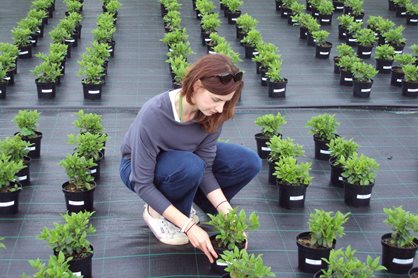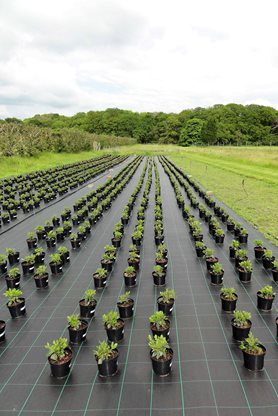
Last Saturday the sun was shining, the birds were singing so out I went to buy a couple of grow-bags from a well-known DIY outlet (no easy feat when you don’t own a car, something my fellow bus passengers would probably attest to). On slicing open a bag with an excessively large kitchen knife (every pair of scissors in the house had suddenly vanished); I noticed a lot of different materials making up the compost inside. Small fibres of wood and bits of twig were present in abundance, which lead me to wonder two things: What’s actually in this compost? Will my plants thrive in it?
Conveniently, when I’m not butchering grow-bags, I’m lucky enough to work as a Horticultural Scientist at the RHS and it’s my job to answer these kinds of questions. I’m working on a project co-funded by the
Horticultural Development Company (HDC), a body which represents the interests of professional plant growers. As you might expect, good quality compost is critical for commercial plant production and so I’m aiming to conduct research that will provide useful information for gardeners and professional growers alike.
10 years ago, when you bought a bag of multi-purpose compost from the garden centre it would more than likely contain peat and little else. However, in the last decade or so the extraction of peat from bogs has become an
environmentally contentious issue; it is now widely viewed as a damaging and unsustainable. As a result compost manufacturers have been ‘encouraged’ to seek out
alternative materials. I’ve been to visit some of these manufacturers and have learned that compost can contain a myriad of materials including peat, green compost, wood fibre, pine bark and coir (coconut husk shipped in from places like India or Indonesia). These peat-free or peat-reduced compost products can often look and feel very different to traditional peat based mixes but perhaps the real question is what affects are these changes having on the plants you grow?

With advice from a compost manufacturer we’ve created 15 different composts from scratch, all containing different proportions of peat alternative materials. We’ve planted up more than 1,600 hardy shrubs (
Viburnum and
Hebe) into these composts to find out just what affects these different materials have on plant growth. Working on this kind of scale has led to the development of muscles and sunburn in some rather interesting places but it has been eye-opening to see just how much work goes into formulating potting compost. We won’t have the final results until October when the experiment finishes but I’ve already noticed how differently some of these composts retain water and I’ll be doing some smaller experiments to investigate this further.
In the mean-time I have 1,600 plants to tend, which should keep me busy……..who says scientists have to wear white coats?

